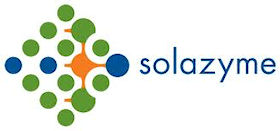Already registered? LOGIN.
-
FEATURE:
Cellulose adapts to new roles -
FEATURE:
Compost provides food for thought -
FEATURE:
Sending algae down the mine -
FEATURE:
Let’s find a new route -
FEATURE:
UBC Master of Engineering Leadership in Green...
Biofpr Survey
Interviews

Welcome to the The Interview series brought you by BioFPR.
 In the first interview, BioFPR Editor Simon Lightfoot talks to Jonathan Wolfson, Chief Executive Officer of Solazyme Inc, at the World Biofuels Markets, held in Rotterdam.
In the first interview, BioFPR Editor Simon Lightfoot talks to Jonathan Wolfson, Chief Executive Officer of Solazyme Inc, at the World Biofuels Markets, held in Rotterdam.
Simon Lightfoot: Could you explain the significance of Solazyme’s recent biofuels flight with United Airlines?
Jonathan Wolfson: For the process of maturation of a technology in a company, I think it’s a really important milestone. If you’ve been coming to these conferences for a number of years, and following the industry, you’ll know there’s been for many years, conversations about aviation, about renewable fuels in aviation. And then a few years back Virgin flew a flight on a variety of different oils that they had collected. But the significance of this flight is both for Solazyme, but also for industry-wide, commercialisation significance, because this was actually a commercial flight. This wasn’t a test. It was a fully commercial flight, and in fact it was completely packed. It was a commercial flight by United, from Houston to Chicago, and it was not on a 5% blend, it was on a 40% blend, in both engines.
So, it’s a big milestone that we’ve now moved from testing, and years and years of conversations, to literally the first commercial flight in the US on biofuels. And, in fact, more than that, it was the first commercial flight in the world on a microbial biofuel. That also suggests something else: it suggests, first of all, that industry is interested and ready on the demand side of aviation, and it also tells you that government has done its job, because in order for us to be able to do that, there was a specification that was finalised by the ASTM [American Society for Testing and Materials] for renewable jet fuel. So it tells you that government and regulatory authorities were involved with their eyes on the prize, and it tells you that industry on the supply side – Solazyme – was able to produce large enough volumes of in-spec fuel to power this flight. So if you really look, it demonstrates the convergence of a bunch of the really important pieces that demonstrate the dawn of renewable fuels in aviation, from my perspective.
SL: With that first step to making biofuels a commercial viability, the billion dollar question: when do you see that happening?
JW: It’s going to be rolling out over time. You’ll see fuel applications over the next three to five years at scale. Because you’re talking about large scale facilities that generally cost over a $100 million to build. And it won’t just be from Solazyme. Remember, that specification was one that ultimately other companies will be able to meet. Obviously, we think our technology is more than competitive in this space, but you’ll really start to see the commercialisation rolled out in a two to five year timeline. And in the five to ten year timeline, you’re going to see really significant volumes.
SL: You do an awful lot of work with the US military. How did that come about, and what does that mean for Solazyme?
JW: This equates to demand signals, which is what you need in order to both build demonstration plants, but also to build commercial plants. Interestingly the Navy and the US Department of Defence has different motivations than, say, a United Airlines. The Department of Defence is looking at things like energy security. In fact this goes back to our first conversations with the Navy back in 2007, so you’re talking about five years ago, at this point, and it’s been a very gradual process, because there’ve been a lot of, let’s call them stage gates, along the way: we’ve delivered on a significant number of contracts, all of them on time, and in-spec, which is something I’m very proud of. But again, here you’re talking about a different spec, a military spec, and here you’re talking about not just aviation fuel, but you’re also talking about marine fuel. And so what it does is allow us to broaden the targets. Because marine diesel, it turns out, is actually very similar to road diesel. It has some different specs in some areas, but it’s similar enough that it overlapped well with a lot of the work we were doing for commercial on-road diesel. And the Navy created the demand signal by saying to us, “if you can make it, and you can make it in-spec, we’re going to start testing it in our platforms to certify it.”
SL: And that presumably then allows you to get the investment that’s needed?
JW: That’s right. It’s a cycle. You do work, you demonstrate that your work is valuable, you end up with a product that you can use, you go out and have to raise more money, you have to hire more people: you’re building a company at the same time that you’re delivering on contracts and making fuel. Because ultimately you need an entity that can be commercial. And when we started out we were just two guys!
SL: So, before you got those demand signals, how did you attain that investment and mitigate the risk?
JW: Well, one way we mitigated the risk is by – although fuels is a massive target for us – we also work in chemicals and personal care materials, even cosmetics and food. So, one way we mitigated risk is we developed market applications in areas that are much smaller volume, and higher margin. And what that means is, instead of commercialisation requiring construction of a very large facility with a big investment, you have smaller investments for small volumes and high margins. We’re a fermentation company: we can actually lease existing fermentation assets that are already there, and yes it’s expensive to lease someone else’s assets, but if it’s small volume and high margin, you can afford to do it. So you can actually get commercial before you’ve raised the amounts of money required for financing large projects. That’s a way to really bring the company commercial, as you work your way towards the very high volume big wins in things like fuel. So, that was one of the ways we mitigated the risk and brought in investors: we demonstrated that our technology had applications into food, into cosmetics, and into chemicals.
SL: What do you see as the next big milestone for Solazyme?
JW: We’ve been public about saying that we should be entering into a joint venture with a company called Bunge, which is a very large agricultural company, working in vegetable oils, and sugar and ethanol. So our expectation is that in the first half of this year we’ll formally enter into the joint venture and break ground on a plant in Brazil. And there will probably be some other announcements with respect to partnerships.
SL: And then moving towards the biobased economy you’ve spoken of?
JW: And that will happen soon. We’re already selling products in Sephora, in General Nutrition Centres and in Whole Foods Markets today, so we’ve begun that process. Now, it’s just the expansion…
For more information about Solazyme, Inc. please visit their website
